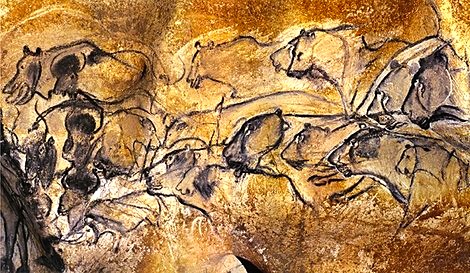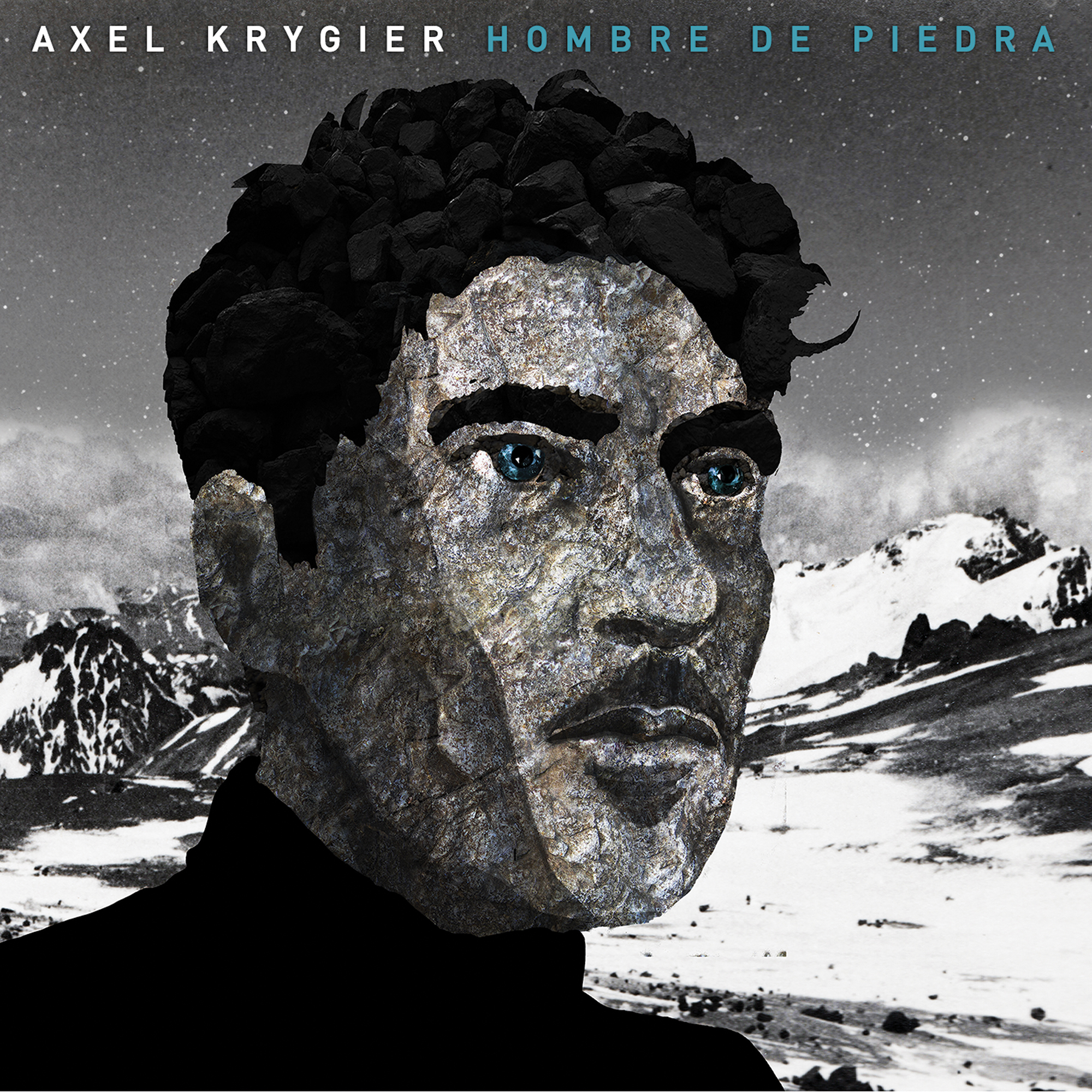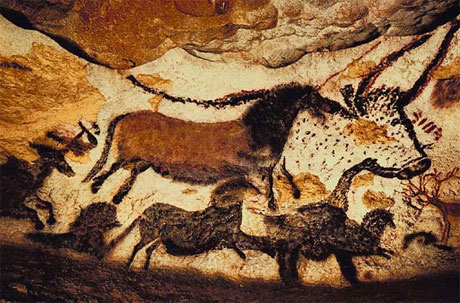For decades now, Axel Krygier has been one of the most creative and innovative musicians in the Buenos Aires underground. He started his career in the late '80s, after training as a classical composer, and played in the popular rock group La Portuaria in the '90s. Axel went on to be one of the first performers at the ZZK parties that helped popularize electro-cumbia in Argentina. For his newest album, the excellent Hombre De Piedra (available now from Crammed), Axel was inspired by the French documentary Lascaux: Le Ciel des Premiers Hommes, which connects the paintings of the Lascaux Caves in France to constellations. Afropop writer Jesse Brent caught up with Axel over Skype to discuss the new album and his thoughts on today's scene in Buenos Aires.
Jesse Brent: I really like your new album! I think it’s great.
Axel Krygier: Thank you. It’s good to hear that. My music is not so well known in America--North America at least.
Right. I hadn’t actually heard of you until recently. But this is your second international release, right?
Well, actually there was another international release in 2001 with a small label--smaller than Crammed--an independent label from Spain. So, my first album was distributed in Europe and I don’t know about the United States.
And this is your fourth or fifth solo album, in total?
Yes, it’s the fifth if you count the second album, which was music for a dance work, but adapted to be an album, with one song added. So, it’s my fifth album, but it’s the fourth with lyrics.
Can you talk a little bit about the documentary that inspired this album--the documentary about Lascaux?
Yes. Well, before seeing the documentary, I loved the idea of making something about the man of caverns. I always feel some link with the old man, you know? When I was a kid, I played a lot with other friends--as a very, very small kid, like three years old--I played with dinosaurs, and we were cavemen. And when I saw the documentary, I had a flash. The documentary was about how the cavemen put stars--a map of stars--constellations--in their paintings. So, there is the Zodiac, but also other constellations and other animals. Some constellations were the same. Like the polar bear. They put their knowledge about the stars in their paintings. This documentary shows how they use a laser and other instruments--they prove that, even if there are many scientists who don’t agree with this theory. But for me, it was incredible. That shoots on my head all these lyrics.
I know how the first song on the album connects, because, of course, it’s all about the caveman. But how are the other songs on the album related? Are they all part of the same theme or is it more loose?
The concept in the album is like a man who walks from the past to the future, or the present. In some songs, there are some connections that you can hear. In other songs, no. So, it’s a concept for the album, but not every song is part of that concept.
It’s sort of seeing the modern world through the eyes of a caveman?
It’s the underlying concept.
What is it about the caveman that you find so interesting? You feel like you understand the caveman or is it more a sense of mystery and not knowing?
I like to imagine how earth could be in those times. And I find also, knowing that he was scientific in a way, I think that the man was always the same. The evolution is just a matter of growing the population, but the man is the same. And so I can feel the caveman in myself.
Cool. Have you seen the documentary Cave of Forgotten Dreams?
Yes. After. After I made the album.
I really love that movie and I think that it relates a bit to what you’re talking about, too.
Yes, of course. It was a nice surprise to know that [Werner] Herzog put his eyes on the same subject.
And the art itself is so beautiful, also.
Yes, there are many mysteries. Things we don’t know. But also you start to think that 35,000 years is not so much.
 Painting from the Chauvet cave, seen in Cave of Forgotten Dreams
Painting from the Chauvet cave, seen in Cave of Forgotten Dreams
So, to go back a little bit, can you tell me how you first started as a musician?
Well, I started when I was maybe seven or eight years old playing flute and recorder. We used to listen to a lot of music in my house. My parents were not musicians, but they really loved music. And I have a sister older than me, who used to listen to a lot of music. And she had friends older than she. So they brought over to the house very good music. Modern music in those times. And well, I started to imagine music and I felt that I was a composer, in my mind. I thought that I wanted to be a modern classical composer. So I studied for that for a few years. And then I started to record my ideas in a multitrack when I was 18, after visiting New York. I visited my friend Fernando Samalea, who was at those times the drummer of Charly Garcia, who is the biggest rock musician here. And I visited him in the Electric Lady studio. I spent a whole night there until morning, listening to the album--the last mix of the album that he recorded there with Charly Garcia. And it was so strong--the experience--that in Buenos Aires I started to record my own music there. And all the classical stuff starts to seem a little bit far from my wishes. I love to record my own ideas. And I had a revelation. I am a popular musician! [Laughs] Not popular because the amount of people that will listen to my music, but my inspiration is in popular rhythms--my way to do the things. And it is not to write a paper and then I play. It is not the idea before the fact. But it is the fact first.
What was the music that your older sister was playing when you were a kid? Was it mostly from Argentina or from all over the world?
No. More like over the world. At those times, the label--the jazz or classical label, ECM. All the Keith Jarrett records and Egberto Gismonti, many jazz artists--modern jazz. We listened to a lot of that. And after that, the first albums of Peter Gabriel and David Bowie, Talking Heads, and after that, Laurie Anderson, many New York artists from those times--early ‘80s.
So was it later on that you started listening to more stuff like cumbia, music from Argentina? Because I know that you do use some of those styles, or you have, for your career.
Actually, I started to play Argentine folklore at the age of 14. At 14, I started to play with a group from my school, to play Argentine folklore and also Latin American folklore. So there, I knew all the local rhythms, and I knew how to play that, and I really love it. Then, the ‘80s come, and everything is a little bit anachronistic for those times--the folklore. And many years after that, I knew the Colombian cumbia. And here, cumbia is one of the most popular rhythms, but it’s not the music that you are going to hear on the normal radio. It’s important to know that Argentina is a country, or Buenos Aires, at least, is a city, where there are many layers of cultures. From la villa, like favela, there is cumbia villera, which is cumbia from the favela, and there was a boom of cumbia villera in the ‘90s. For my first I album, I wanted to wink at that music and the folklore music also. My music is a little bit more lounge or electronic, but I needed to put some homage to local music. Then, all those rhythms came again to the big public and it was very normal to listen to folklore-electronic.
So you were an original member of ZZK. When did that start up?
That started with some parties, with many producers. And they invited me to be a part of some parties, playing my material, and I developed my set, as a solo set. That was very important for me, because I started to make my performance. My shows started to be a performance and not just playing music. I love to see all the people in the public, shouting and dancing. And I felt like, "Yes, this is what I want." So, with ZZK, we made a small tour in the United States. And it was very nice. We played in New York at SOB’s. After that, I continued making my music in different ways. I toured in Europe.
When was it that ZZK started?
My first album was released in ‘99. In 2001 in Europe--in Spain. The ZZK parties started in 2006 or 7. Our tour was in 2008.
So was that when electro-cumbia first became really popular?
Yes. But I never was totally part of that movement. Because my music is not dancing music or club music. It is a little bit more about the songs. It’s between the songs and the club.
And you seem to really be influenced by a lot of different styles, right? Not just cumbia or rock. What kind of music were you listening to when you made your newest album?
I love soul music. I love everything from Motown to D’Angelo. Also, songwriters and club music like Die Antwoord or Skrillex. I really love the club music, but it’s not so easy to make. I’m more into instruments and singing. Of course, Latin American music, also, jazz music, and artists from now and from yesterday. Like Serge Gainsbourg from France.
I definitely see a connection with Serge Gainsbourg. That makes sense.
Yes. Yes. And also hip-hop. I love hip-hop.
What do you think of the music scene in Buenos Aires today?
We have a nice underground scene. There are many new creators, young and talented. For example, today, there is a jam in a nice place where there is a director, who directs with signs, like soundpainting. And there is a very very important and nice moment in the week to go there and play. If I like to play, I go. They give me an instrument, like a saxophone. And I play if I like, or not.
What’s this called?
It’s called La Grande. A group from here--very important--called Santiago Vazquéz y La Grande. And they are very good musicians. So it’s a very nice moment to find new friends. And also, there are good singers--boys and girls--who have their projects. It’s a nice moment, I think, for the music. It is difficult to live--to make money--with this for everybody in the music.
Who are some of your favorite current artists from Buenos Aires?
There is a girl. Her name is Sofia Viola. She is a good friend of mine. I’ve played in some concerts with her. There is also Fred Lorca, Gaby Kerpel, Loli Molina, Jvlian, Recoveko, Lucas Martí, and Diosque.
When does Hombre de Piedra come out?
I think in the United States, today.
Today? Oh, so good timing. But it’s been out for longer in Argentina?
Yes, in Argentina, it was released two weeks ago. In Europe, it came out in March.
It came out first in Europe?
Yes, because my label is Crammed Discs. They have the rights in the whole world. I can edit it here, but just for Argentina, my historic label here, Los Años Luz. You know, on my website, you can see all the lyrics.
Yeah! It’s very well designed. It looks good.
It’s brand new.
Do you do your own drawings also?
Yes. I prefer to make my designs and drawings for the album, because if I don’t do that, I never draw. I like to draw and like to have an objective.
When was the last time you came to the United States?
It was with the ZZK tour in 2008.
But you’ve been to Europe a lot, right?
Yes, now I think maybe in July or August, I will go.
To the U.S.?
Yes. I don’t know if I will play, because, until now, I don’t have any shows.
Well, it would be great if you can find a way to perform. I’d love to see it.
Please, I’d love to do it.
Is there anything else you’d like to say?
This is my first album that I made with a band--my band, who is now three years old. It’s very nice for me to do my album in that way. Before that, was like collage. I recorded all the instruments. And then I called my friend, the drummer, the same one from ‘87 in New York. That guy records all the drums on my albums. And now, the process was different. I started to record with my band, and then I put all my other stuff in--my overdubs.
Is this the same band you’re playing shows with?
Yes, it is the same band who has played with me since 2011.












